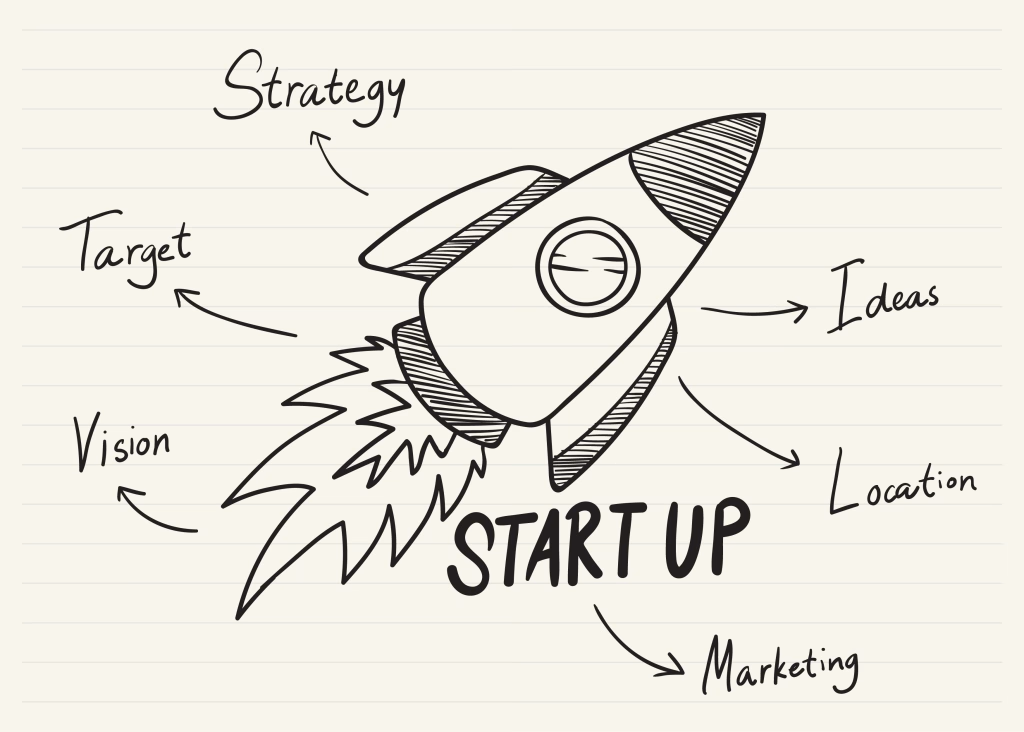The Lean Startup: How Today's Entrepreneurs Use Continuous Innovation to Create Radically Successful Businesses.
Overview of the Lean Startup Methodology.
The Lean Startup methodology, popularized by Eric Ries in his groundbreaking book “The Lean Startup: How Today’s Entrepreneurs Use Continuous Innovation to Create Radically Successful Businesses,” is a revolutionary approach to business development. This methodology emphasizes the importance of continuous innovation, rapid prototyping, and validated learning to create successful startups. By focusing on building a Minimum Viable Product (MVP) and iterating based on real customer feedback, entrepreneurs can avoid the common pitfalls of traditional business models and achieve sustainable growth.

Importance of Continuous Innovation in Today's Business Environment.
In today’s fast-paced business environment, continuous innovation is crucial. Traditional business models often fail to keep up with the rapid changes in technology and consumer preferences. The Lean Startup methodology addresses this by encouraging a culture of constant experimentation and learning. This approach allows businesses to adapt quickly, meet customer needs more effectively, and stay ahead of the competition.
Brief Introduction of Eric Ries, the Author.
Eric Ries, the author of “The Lean Startup,” is a renowned entrepreneur and startup advisor. With a background in computer science and experience in founding and advising multiple startups, Ries has firsthand knowledge of the challenges faced by entrepreneurs. His insights and practical advice have made “The Lean Startup” a must-read for anyone looking to build a successful business in the modern era.
Purpose of the Article.
This article aims to provide a comprehensive overview of the Lean Startup methodology, exploring its origins, core principles, practical applications, and success stories. By the end of this article, readers will have a thorough understanding of how to implement Lean Startup principles in their own businesses and achieve sustained success.
Origins of the Lean Startup.
Historical Context
The Lean Startup methodology has its roots in lean manufacturing, a production philosophy developed by Toyota in the 1950s. Lean manufacturing focuses on minimizing waste and maximizing efficiency, principles that have been adapted to the startup environment. Additionally, agile development practices, which emphasize flexibility and customer feedback, have significantly influenced the Lean Startup approach.
Influences from Lean Manufacturing and Agile Development
Lean manufacturing’s emphasis on efficiency and waste reduction, combined with agile development’s focus on iterative progress and customer feedback, form the backbone of the Lean Startup methodology. By integrating these principles, the Lean Startup approach provides a flexible and efficient framework for developing new products and businesses.
The Problem with Traditional Business Plans
Traditional business plans often rely on extensive upfront planning and assumptions about customer needs and market conditions. These assumptions can lead to costly mistakes if they prove to be incorrect. The Lean Startup methodology addresses this by promoting a more adaptive and customer-focused approach, allowing entrepreneurs to test their assumptions and pivot as needed based on real-world feedback.
Core Principles of the Lean Startup.
Build-Measure-Learn Feedback Loop
The Build-Measure-Learn feedback loop is the core process of the Lean Startup methodology. It involves creating a Minimum Viable Product (MVP), measuring its performance through customer feedback and data, and learning from the results to make informed decisions about the next steps. This iterative process allows for continuous improvement and adaptation.
Build: Creating a Minimum Viable Product (MVP)
The first step in the Build-Measure-Learn feedback loop is to build a Minimum Viable Product (MVP). An MVP is a simplified version of a product that includes only the essential features needed to test a hypothesis or gather customer feedback. By starting with an MVP, entrepreneurs can quickly validate their ideas and make necessary adjustments without investing significant time and resources.
Measure: Gathering Data and Metrics
Once the MVP is built, the next step is to measure its performance. This involves collecting data and metrics on how customers interact with the product, their satisfaction levels, and any issues they encounter. By analyzing this data, entrepreneurs can gain valuable insights into the product’s strengths and weaknesses.
Learn: Making Informed Decisions Based on Data
The final step in the feedback loop is to learn from the collected data. This involves evaluating the results, identifying patterns and trends, and making informed decisions about whether to pivot (change direction) or persevere (continue on the current path). The goal is to use data-driven insights to guide the development process and improve the product continuously.
Importance of Iteration and Pivoting
Iteration and pivoting are essential components of the Lean Startup methodology. By continuously iterating on the product and being willing to pivot when necessary, entrepreneurs can adapt to changing market conditions and customer needs. This flexibility is crucial for achieving long-term success.
Validated Learning.
Definition and Significance
Validated learning is the process of demonstrating empirically that a team has discovered valuable truths about a startup’s present and future business prospects. It is a core principle of the Lean Startup methodology, emphasizing the importance of learning through experimentation and data rather than relying on assumptions and traditional business planning.
How It Differs from Traditional Learning
Traditional learning often involves theoretical knowledge and assumptions, while validated learning focuses on practical, data-driven insights. By conducting experiments and measuring the results, entrepreneurs can validate their hypotheses and make informed decisions based on real-world evidence.
Methods to Validate Learning
Validated learning can be achieved through various methods, including:
A/B Testing: Comparing two versions of a product to see which performs better.
Cohort Analysis: Analyzing the behavior of different groups of users over time.
Customer Interviews: Gathering qualitative feedback from customers to understand their needs and preferences.
Surveys and Questionnaires: Collecting quantitative data from a larger sample of users.
By using these methods, entrepreneurs can gather valuable insights and validate their learning.
Innovation Accounting.
Purpose and Benefits
Innovation accounting is a specialized form of accounting that helps startups measure progress, set milestones, and prioritize tasks. It provides a framework for evaluating the performance of innovative projects and making data-driven decisions.
Metrics Used in Innovation Accounting
Innovation accounting involves tracking specific metrics that reflect the startup’s progress and potential for success. These metrics may include:
Customer Acquisition Cost (CAC): The cost of acquiring a new customer.
Lifetime Value (LTV): The total revenue a business expects to earn from a customer over their lifetime.
Churn Rate: The percentage of customers who stop using the product over a specific period.
Revenue Growth: The rate at which the startup’s revenue is increasing.
Case Studies of Companies Using Innovation Accounting.
Several companies have successfully used innovation accounting to drive their growth.
For example:
- Dropbox: Utilized metrics to optimize user acquisition strategies and improve product features.
- Airbnb: Leveraged data to refine its marketplace and enhance user experience.
- Zappos: Applied metrics to improve customer service and loyalty programs.
These case studies demonstrate the effectiveness of innovation accounting in guiding business decisions and achieving success.
Minimum Viable Product (MVP).
Definition and Examples
A Minimum Viable Product (MVP) is a version of a product that includes only the most essential features needed to test a business idea and gather feedback from early adopters. The goal of an MVP is to validate hypotheses and learn from real customer interactions without investing significant time and resources.
Benefits of Starting with an MVP.
Starting with an MVP offers several benefits, including:
- Cost Efficiency: Reduces development costs by focusing on core features.
- Faster Time-to-Market: Allows for quicker release and testing of the product.
- Early Validation: Provides early feedback on the product’s viability and market fit.
Case Studies of Successful MVPs.
Successful MVPs have played a crucial role in the growth of many well-known companies. For example:
- Twitter: Launched as a simple messaging platform before evolving into a comprehensive social media network.
- Instagram: Initially a photo-sharing app with basic features that later added more functionality based on user feedback.
These examples highlight the effectiveness of MVPs in testing ideas and iterating based on real-world data.
Pivot or Persevere.
Understanding When to Pivot,
Deciding whether to pivot or persevere is a critical aspect of the Lean Startup methodology. A pivot involves making a fundamental change to the product or business model based on feedback and data. Entrepreneurs should consider pivoting when:
- Customer Feedback Indicates a Need for Change: Customers express dissatisfaction or request significant changes.
- Metrics Show Poor Performance: Key metrics are not meeting expectations or show declining trends.
- Market Conditions Change: External factors impact the viability of the current approach.
Different Types of Pivots,
There are several types of pivots, including:
- Zoom-in Pivot: Focusing on a specific feature or aspect of the product that shows the most promise.
- Zoom-out Pivot: Expanding the product’s scope to address a broader market.
- Customer Segment Pivot: Targeting a different customer segment that better fits the product.
Case Studies of Successful Pivots,
Notable examples of successful pivots include:
- Instagram: Originally a location-based check-in app, it pivoted to focus solely on photo-sharing, leading to its massive success.
- Slack: Initially developed as an internal communication tool for a gaming company, it pivoted to become a widely-used team collaboration platform.
These case studies demonstrate the importance of flexibility and adaptability in achieving business success.
Lean Startup in Practice.
Implementing the Lean Startup Methodology in a New Business,
Implementing the Lean Startup methodology involves adopting its core principles and practices. This includes:
- Developing an MVP: Start with a simple version of the product to test assumptions.
- Conducting Experiments: Use experiments to gather data and validate learning.
- Iterating Quickly: Make rapid improvements based on feedback and data.
Challenges and Common Pitfalls,
While the Lean Startup methodology offers many benefits, it also presents challenges, such as:
- Resistance to Change: Teams may resist the iterative process and prefer traditional methods.
- Data Overload: Excessive data can lead to analysis paralysis and hinder decision-making.
- Balancing Speed and Quality: Rapid iterations may impact the quality of the product.
Tools and Resources for Entrepreneurs,
Entrepreneurs can leverage various tools and resources to support their Lean Startup journey, including:
- Lean Canvas: A visual tool for mapping out business models and assumptions.
- Customer Development Interviews: Techniques for gathering valuable feedback from potential customers.
- Experimentation Platforms: Tools for running A/B tests and analyzing results.
These resources can help entrepreneurs effectively implement Lean Startup principles and drive their business success.
Case Studies of Lean Startup Successes.
Dropbox
Dropbox utilized the Lean Startup methodology to validate its product idea and build a successful file-sharing platform. By starting with a simple MVP and gathering user feedback, Dropbox was able to refine its features and scale rapidly.
Airbnb
Airbnb applied Lean Startup principles to test and validate its marketplace for short-term rentals. Through iterative development and customer feedback, Airbnb transformed from a small startup to a global leader in the travel industry.
Zappos
Zappos used Lean Startup methods to test its online retail concept and optimize its customer service operations. By focusing on customer feedback and continuous improvement, Zappos became a major player in the e-commerce space.
Other Notable Examples
Additional examples of Lean Startup successes include:
- Groupon: Started as a simple platform for local deals and evolved based on user feedback.
- Product Hunt: Initially a side project that grew into a popular platform for discovering new products through iterative development.
These case studies illustrate the effectiveness of the Lean Startup methodology in achieving business success.
Lean Startup and Corporate Innovation.
Application in Established Companies
Established companies can apply Lean Startup principles to drive innovation and remain competitive. This involves adopting a startup mindset, focusing on customer needs, and experimenting with new ideas.
Differences Between Startups and Corporate Innovation
While startups often have more flexibility and agility, established companies face unique challenges, such as:
- Bureaucracy: Hierarchical structures can slow down decision-making and innovation.
- Risk Aversion: Established companies may be more cautious about taking risks.
- Resource Allocation: Balancing resources between existing operations and new projects can be challenging.
Examples of Corporate Innovation Using Lean Startup Principles
Several large companies have successfully implemented Lean Startup principles, including:
- Google: Uses Lean Startup methods to test and iterate on new products and features.
- Intel: Applies Lean Startup principles to drive innovation in its technology development.
These examples demonstrate how established companies can leverage Lean Startup principles to drive innovation and growth.
Lean Startup and Product Development.
Conducting Market Research Using Lean Startup Methods
Lean Startup methods offer a more dynamic approach to market research, focusing on rapid experimentation and real-world data. This includes:
- Customer Development: Engaging with potential customers to understand their needs and preferences.
- Lean Experiments: Testing assumptions through experiments and analyzing results.
Benefits Over Traditional Market Research
Compared to traditional market research, Lean Startup methods offer several advantages:
- Real-Time Feedback: Provides immediate insights from actual customers.
- Cost-Effective: Reduces the need for expensive surveys and focus groups.
- Flexibility: Allows for rapid adjustments based on feedback.
Tools and Techniques
Tools and techniques for conducting market research using Lean Startup methods include:
- Surveys and Polls: Quick and cost-effective ways to gather customer feedback.
- A/B Testing: Comparing different versions of a product to determine the most effective option.
- Usability Testing: Observing how customers interact with a product to identify areas for improvement.
These tools can help entrepreneurs conduct effective market research and make data-driven decisions.
Lean Startup and Market Research.
Importance of Customer Feedback
Customer feedback is crucial for the Lean Startup methodology, as it provides valuable insights into the product’s performance and customer needs. By incorporating feedback, entrepreneurs can make informed decisions and improve their products.
Methods to Gather and Analyze Feedback
Methods for gathering and analyzing customer feedback include:
- Surveys and Questionnaires: Collect quantitative data on customer satisfaction and preferences.
- Interviews: Conduct in-depth conversations with customers to gain qualitative insights.
- Feedback Forms: Collect feedback directly from users through online forms or in-app features.
Incorporating Feedback into the Development Process
Incorporating feedback involves:
- Analyzing Data: Identifying patterns and trends in customer feedback.
- Prioritizing Changes: Determining which changes will have the most significant impact on customer satisfaction.
- Implementing Improvements: Making necessary adjustments based on feedback and testing new versions of the product.
By effectively incorporating feedback, entrepreneurs can create products that better meet customer needs and drive business success.
Lean Startup and Customer Feedback.
Importance of Customer Feedback
Customer feedback is crucial for the Lean Startup methodology, as it provides valuable insights into the product’s performance and customer needs. By incorporating feedback, entrepreneurs can make informed decisions and improve their products.
Methods to Gather and Analyze Feedback
Methods for gathering and analyzing customer feedback include:
- Surveys and Questionnaires: Collect quantitative data on customer satisfaction and preferences.
- Interviews: Conduct in-depth conversations with customers to gain qualitative insights.
- Feedback Forms: Collect feedback directly from users through online forms or in-app features.
Incorporating Feedback into the Development Process
Incorporating feedback involves:
- Analyzing Data: Identifying patterns and trends in customer feedback.
- Prioritizing Changes: Determining which changes will have the most significant impact on customer satisfaction.
- Implementing Improvements: Making necessary adjustments based on feedback and testing new versions of the product.
By effectively incorporating feedback, entrepreneurs can create products that better meet customer needs and drive business success.
Lean Startup and Business Models.
Designing Business Models with Lean Startup
The Lean Startup methodology emphasizes designing business models that are flexible and adaptable. This involves:
- Testing Assumptions: Validating key assumptions about the business model through experiments and customer feedback.
- Iterating Quickly: Making adjustments to the business model based on real-world data.
Experimenting with Different Business Models
Entrepreneurs can experiment with different business models to find the most effective approach. This may include:
- Subscription Models: Offering products or services on a recurring basis.
- Freemium Models: Providing a basic version of the product for free and charging for premium features.
- Marketplace Models: Connecting buyers and sellers through a platform.
Examples of Innovative Business Models
Examples of innovative business models include:
- Netflix: Transitioned from a DVD rental service to a subscription-based streaming platform.
- Uber: Disrupted the traditional taxi industry with a peer-to-peer ride-sharing model.
These examples highlight the potential of experimenting with different business models to achieve success.
Lean Startup and Team Building.
Building a Team with Lean Startup Principles
Building a team with Lean Startup principles involves creating a culture of experimentation and learning. This includes:
- Hiring for Flexibility: Recruiting team members who are adaptable and open to change.
- Encouraging Collaboration: Fostering a collaborative environment where team members can share ideas and feedback.
- Promoting Learning: Supporting continuous learning and professional development.
Roles and Responsibilities
Key roles and responsibilities in a Lean Startup team include:
- Product Manager: Oversees product development and ensures alignment with customer needs.
- Data Analyst: Analyzes data and provides insights to guide decision-making.
- Customer Researcher: Conducts customer interviews and gathers feedback.
Culture of Experimentation and Learning
A culture of experimentation and learning is essential for the Lean Startup methodology. This involves:
- Encouraging Risk-Taking: Supporting team members in testing new ideas and approaches.
- Learning from Failure: Viewing failures as opportunities for learning and improvement.
- Celebrating Successes: Recognizing and rewarding successful experiments and innovations.
By fostering a culture of experimentation and learning, entrepreneurs can build effective teams and drive business success.
Lean Startup and Funding.
Approaching Investors with a Lean Startup Strategy
Approaching investors with a Lean Startup strategy involves demonstrating the value of the methodology and its potential for success. This includes:
- Showcasing Validation: Presenting evidence of validated learning and customer feedback.
- Highlighting Iterative Progress: Emphasizing the iterative development process and its benefits.
- Providing Clear Metrics: Sharing key metrics and milestones achieved through Lean Startup practices.
Benefits for Investors
Investors can benefit from Lean Startup strategies by:
- Reducing Risk: Minimizing the risk of investing in unproven ideas through iterative validation.
- Improving Returns: Increasing the likelihood of successful investments through data-driven decision-making.
- Supporting Innovation: Encouraging innovative approaches and disruptive technologies.
Examples of Successful Funding Rounds
Examples of successful funding rounds for companies using Lean Startup principles include:
- Dropbox: Secured funding based on early traction and validation of its product.
- Airbnb: Attracted investors with evidence of market fit and user growth.
These examples demonstrate the potential for successful funding using Lean Startup strategies.
Lean Startup and Marketing.
Lean Marketing Strategies
Lean marketing strategies involve applying Lean Startup principles to marketing efforts. This includes:
- Testing Campaigns: Running small-scale marketing campaigns to test different approaches and messages.
- Analyzing Results: Using data to evaluate the effectiveness of marketing efforts and make adjustments.
Measuring Marketing Effectiveness
Measuring marketing effectiveness involves tracking key metrics, such as:
- Conversion Rates: The percentage of users who take a desired action.
- Cost Per Acquisition (CPA): The cost of acquiring a new customer.
- Customer Retention: The rate at which customers continue to use the product or service.
Case Studies of Successful Lean Marketing Campaigns
Successful Lean marketing campaigns include:
- Dropbox: Used a referral program to drive user growth and increase product adoption.
- Airbnb: Leveraged targeted online advertising to attract new users and increase bookings.
These case studies illustrate the effectiveness of Lean marketing strategies in driving business success.
Lean Startup Tools and Resources.
Essential Tools for Lean Startup Practitioners
Essential tools for Lean Startup practitioners include:
- Lean Canvas: A visual tool for mapping out business models and assumptions.
- A/B Testing Platforms: Tools for running experiments and comparing different versions of a product.
- Customer Feedback Tools: Platforms for collecting and analyzing customer feedback.
Books, Websites, and Courses
Recommended books, websites, and courses for Lean Startup practitioners include:
- Books: “The Lean Startup” by Eric Ries, “Running Lean” by Ash Maurya
- Websites: Lean Startup Co., Startup Grind
- Courses: Online courses on platforms like Coursera, Udemy, and edX
Communities and Networking Opportunities
Entrepreneurs can benefit from joining Lean Startup communities and networking with other practitioners. This includes:
- Meetups: Local meetups and events focused on Lean Startup practices.
- Online Forums: Online communities and forums for discussing Lean Startup topics.
- Conferences: Conferences and workshops on entrepreneurship and innovation.
By leveraging these tools and resources, entrepreneurs can effectively implement Lean Startup principles and achieve business success.
Criticisms and Limitations of the Lean Startup.
Common Criticisms
The Lean Startup methodology has faced several criticisms, including:
- Overemphasis on Speed: Critics argue that the focus on rapid iteration may lead to superficial or incomplete products.
- Limited Applicability: Some industries and business models may not be well-suited to Lean Startup principles.
- Difficulty in Measuring Success: Determining the effectiveness of Lean Startup practices can be challenging.
Limitations in Certain Industries
Lean Startup principles may have limitations in certain industries, such as:
- Highly Regulated Industries: Industries with strict regulations may require more extensive planning and validation.
- Complex Products: Products with long development cycles or high technical complexity may not fit well with Lean Startup practices.
Addressing the Criticisms
To address these criticisms, entrepreneurs can:
- Balance Speed and Quality: Ensure that rapid iterations do not compromise the quality and effectiveness of the product.
- Adapt Principles to Fit the Industry: Customize Lean Startup practices to suit the specific needs and constraints of the industry.
- Use Complementary Approaches: Combine Lean Startup principles with other methodologies and frameworks as needed.
By addressing these criticisms, entrepreneurs can effectively apply Lean Startup principles and achieve success.
Future of the Lean Startup.
Emerging Trends
Emerging trends in the Lean Startup methodology include:
- Integration with AI and Data Analytics: Using artificial intelligence and data analytics to enhance decision-making and validation processes.
- Expansion to New Industries: Applying Lean Startup principles to new industries and business models.
- Increased Focus on Sustainability: Incorporating sustainability and social impact considerations into Lean Startup practices.
Potential Developments
Potential developments in the Lean Startup methodology may include:
- Advancements in Experimentation Techniques: New methods and tools for conducting experiments and gathering data.
- Evolving Metrics and Measurement: Refinements in metrics and measurement practices to better evaluate progress and success.
- Greater Emphasis on Collaboration: Enhanced collaboration between startups, investors, and other stakeholders.
The Evolving Role of Lean Startup in Entrepreneurship
The Lean Startup methodology is likely to continue evolving as new trends and technologies emerge. Its focus on innovation, experimentation, and data-driven decision-making will remain crucial for entrepreneurs seeking to build successful businesses in the modern era.
Conclusion.
Summary of Key Points,
The Lean Startup methodology offers a powerful framework for creating successful businesses through continuous innovation and validated learning. By focusing on building a Minimum Viable Product, gathering data, and iterating based on feedback, entrepreneurs can avoid common pitfalls and achieve sustainable growth. The methodology’s principles have been successfully applied by numerous startups and established companies, demonstrating its effectiveness in driving business success.
FEATURED POSTS
-
 Elegant Wins Silver Award for Best Web Developer at BestWeb.LK 2024
Elegant Wins Silver Award for Best Web Developer at BestWeb.LK 2024 -
 Elegant Wins Silver Award for Best Technology Website at BestWeb.LK 2024
Elegant Wins Silver Award for Best Technology Website at BestWeb.LK 2024 -
 Congratulations to elegantphotography.lk: Gold Award Winner for Best Micro Enterprises Website at BestWeb.LK 2024
Congratulations to elegantphotography.lk: Gold Award Winner for Best Micro Enterprises Website at BestWeb.LK 2024 -
 Congratulations to ondul.lk: Silver Award Winner for Best Micro Enterprises Website at BestWeb.LK 2024
Congratulations to ondul.lk: Silver Award Winner for Best Micro Enterprises Website at BestWeb.LK 2024







